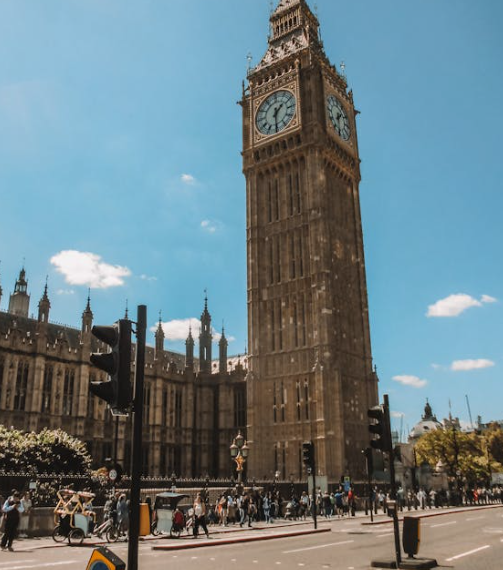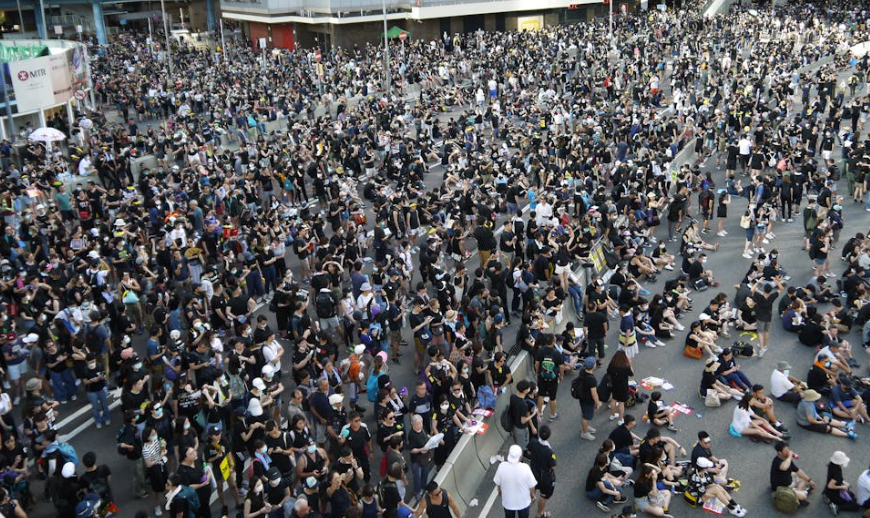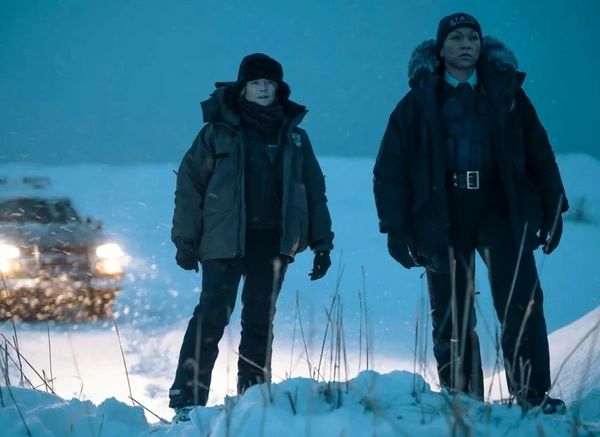The first known record of an earthquake dates back to Chinese writings from around 1831 BCE, mentioning the “shaking of Taishan mountain.” Centuries later, in 132 CE, Chinese philosopher Zhang Heng created the first seismoscope. This device, shaped like an urn, had sculpted dragons, each holding a ball in its mouth. When a tremor occurred, one dragon would release its ball into the mouth of a sculpted toad, indicating the direction of the quake.
Over time, seismological tools improved. In the 1880s, British geologist John Milne developed the modern seismograph. The Richter scale, introduced in 1935, provided a way to measure quake strength. Today, scientists mainly use the moment magnitude scale for accuracy. Modern seismometers can detect earthquakes with a magnitude of 5 or higher anywhere on the globe. Below are 10 of the most powerful earthquakes in history.
Cascadia Megathrust of 1700 // Northern California to British Columbia
On January 26, 1700, at 9 p.m. Pacific Time, one of the biggest earthquakes hit the continental U.S. The exact time is known because Japan has been recording tsunamis since 684 CE.
When Japan saw a tsunami without any local tremors, they figured out it came from the Cascadia margin. This area is where the Juan de Fuca and North American tectonic plates meet, about 70 to 100 miles off the coasts of northern California, Oregon, Washington, and British Columbia. Modern scientists think the quake’s magnitude was 9 or higher. It happened along a subduction zone, where one tectonic plate slides under another, going deep into the Earth’s mantle. This kind of quake is called a megathrust quake.
The “ghost forests” in Oregon and Washington are more proof of the quake. These are tree stumps still standing but were flooded with saltwater during the quake, and the land sank up to 36 feet. First Nations people living on Vancouver Island also have stories about how the quake destroyed their low-lying villages. Scientists say there’s a 37 percent chance that a megathrust quake with a magnitude higher than 7 will happen in the Pacific Northwest in the next 50 years.
Lisbon Earthquake of 1755 // Portugal
On November 1, 1755, a huge earthquake hit Portugal while many people were in church for All Saints’ Day. It was about 8.5 to 9.2 in magnitude. The quake happened on a fault in the Atlantic Ocean floor where three tectonic plates meet. It released as much energy as 32,000 atomic bombs. The earthquake caused a tsunami with 20-foot waves in Lisbon and 65-foot waves in parts of Spain. The waves even reached as far as Martinique in the Caribbean Sea and Algiers in Africa. Rivers in Scotland rose, people in Finland felt the shaking, and lives were lost in Brazil. In Lisbon alone, about 60,000 people died, and many buildings were destroyed.
Even though it caused a lot of destruction, the earthquake brought some positive changes. Sebastião José de Carvalho e Melo, also known as the Marquis de Pombal, led Portugal’s rebuilding efforts. He used new ideas in seismology, architecture, and disaster planning. Pombal suggested redesigning Lisbon’s streets in a grid pattern to make it easier to evacuate during emergencies. Builders started using fire-resistant walls in construction. They also came up with a wooden frame called the Pombaline cage to make buildings stronger during earthquakes.
New Madrid Earthquakes of 1811-1812 // Mississippi Valley
Starting on December 15, 1811, the Mississippi Valley in southeast Missouri felt five big earthquakes and many smaller shakes for three months. Traveler William Pierce described the scene near New Madrid as very scary. Some researchers say the biggest quake was about 8.8 in magnitude. They discovered a new fault line called the New Madrid Seismic Zone, which is more dangerous than the San Andreas fault. This fault runs 150 miles from Arkansas to Illinois. The area’s soft sediment makes it easier for seismic energy to travel, so the shaking was felt from the Eastern Seaboard to the Rockies, and from Canada to Mexico, affecting more than two dozen states and territories.
The last quake happened on February 7, 1812, making the Mississippi River rise about 20 feet. Some small towns were destroyed, but we don’t know exactly how many people died. Experts think not many because the region was mostly rural back then (only 5700 people lived in St. Louis at that time).
Ecuador-Colombia Earthquake of 1906 // Northwest South America
On January 31, 1906, a huge earthquake happened on the border between Ecuador and Colombia. It was caused by the collision of two tectonic plates: the South American plate and the Nazca plate. This created a subduction zone, where one plate slides under the other, leading to a powerful quake with a magnitude of 8.8.
The quake spread over 300 to 370 miles and triggered a 16-foot tall tsunami. This tsunami affected places like Hawaii, Costa Rica, Panama, Mexico, California, and Japan. Buildings collapsed, landslides occurred, and roads were destroyed. It’s believed that between 500 and 1500 people died in this earthquake. It’s still the strongest quake to hit this area, although there have been four more earthquakes since then, with the latest one in 2016.
Kamchatka Earthquake of 1952 // Russia
On November 4, 1952, a huge earthquake hit a part of far eastern Russia called the Kuril-Kamchatka Arc. This area is known for lots of earthquakes. It stretches about 1300 miles from northern Japan up to the Pacific coast of the Kamchatka Peninsula and to Russia’s Commander Islands. Here, the Pacific plate goes under the North American plate. There have been nearly 150 big earthquakes along this arc since 1900, with magnitudes of 7 or 8, often followed by big tsunamis.
The 1952 earthquake is the biggest one ever recorded in this area. It was a magnitude 9 quake, making it the world’s fifth largest recorded by instruments. The tsunami that followed had waves as tall as 50 feet, hitting the Russian city of Severo-Kurilsk and killing 15,000 people. The waves also reached Peru, Chile, New Zealand, Alaska, and California. In Hawaii, the damage was worst, especially on Oahu’s north shore, where waves reached nearly 15 feet high.
Valdivia Earthquake of 1960 // Chile
According to the United States Geological Survey (USGS), the Valdivia earthquake, also known as the Great Chilean Earthquake, is the strongest quake ever recorded. It hit southern Chile on May 22, 1960, with a magnitude of 9.5. Seismographs recorded seismic waves from the quake traveling worldwide for many days, a phenomenon called free oscillation.
The rupture zone of the earthquake ran for 300 to 600 miles along the Chilean coast. Valdivia was the hardest-hit city, where nearly 2 million people lost their homes, 3000 were injured, and 1600 people were killed. The financial damages totaled roughly $550 million at the time, which would be $5.6 billion when adjusted for today’s dollars. The quake also caused a terrifying tsunami, devastating communities in Hawaii, the Philippines, Japan, and New Zealand.
Good Friday Earthquake of 1964 // Alaska
Americans might associate earthquakes with California, but actually, every single U.S. state has experienced at least one quake. Alaska, in particular, is one of the most seismically active areas in the world, facing the most quakes in the country. Almost every year, Alaska feels a magnitude 7 quake, and every 14 years or so, it experiences one of magnitude 8 or higher.
On the evening of March 27, 1964, the largest quake ever recorded in U.S. history struck Prince William Sound on Alaska’s southern coast, with a magnitude of 9.2. This megathrust quake, located about 100 miles southeast of Anchorage, caused tremors that lasted for five full minutes. Tsunamis resulting from the quake killed 124 out of 139 total victims.
Thousands of aftershocks continued for three weeks, with 11 of them registering a magnitude greater than 6.2 on the first day alone. The ongoing tremors caused the ground to behave more like a liquid, leading to landslides, spreading, and settling. In Anchorage, one landslide damaged 30 blocks of homes and commercial buildings, along with water, gas, sewer, and power lines. Some areas experienced permanent changes due to the quake: the coastline near Kodiak was raised 30 feet higher, while Girdwood, closer to Anchorage, dropped by about eight feet.
Indian Ocean Earthquake of 2004 // Sumatra and Andaman Islands
On December 26, 2004, a massive earthquake struck off the coast of Sumatra in Indonesia. This earthquake, measuring 9.1 on the Richter scale, is the third largest ever recorded.
The quake originated over 18 miles below the ocean floor, where the Indian plate goes beneath the Burma plate. It stretched for about 800 miles, similar to the length of California. Tremors were felt across Indonesia and in other countries like India, Sri Lanka, and Thailand.
The earthquake triggered a tsunami. A 167-foot wave hit Sumatra’s northern coast within 20 minutes, traveling three miles inland and destroying everything in its path. The same tsunami reached Somalia seven hours later, with waves ranging from 10 to 30 feet high. Elevated water levels were recorded at 100 coastal stations worldwide.
The tsunami displaced 1.7 million people and claimed over 227,000 lives in 17 countries. The total damage cost amounted to $16 billion. Indonesia suffered the most, with 167,000 casualties and $7.5 billion in damages. This tragedy spurred improvements in warning systems and increased global awareness of tsunami risks in the Indian Ocean.
Maule Earthquake of 2010 // Chile
On February 27, 2010, a huge earthquake with a magnitude of 8.8 hit south-central Chile. The quake’s center was in the Conception-Constitucion area, which hadn’t experienced a major quake recently and was overdue for one. This earthquake, caused by the Nazca plate colliding with the South America plate, was the largest in Chile since 1960. Fortunately, stricter building codes established after the earlier Valdivia quake and improved disaster preparedness helped save lives.
The Maule quake caused about 570 deaths, fewer compared to other major quakes, but it still had a significant impact. It was felt in six regions where 80 percent of Chile’s population lives. The earthquake caused $30 billion in damage, and the ensuing tsunami destroyed several coastal towns with waves as high as 100 feet.
Tohoku Earthquake of 2011 // Japan
Just 81 miles east of Japan’s largest island, Honshu, a massive 9.1-magnitude earthquake shook the seabed on March 11, 2011. It hit an area where the Pacific and North American plates meet, causing Japan’s most powerful earthquake ever and tying as the third largest recorded since 1900.
Less than 30 minutes later, a huge tsunami swept over more than 1200 miles of coastline, with the most damage around Sendai, the capital of the Tohoku region. Waves over 130 feet high destroyed buildings, roads, and railways, leaving around 450,000 people homeless. Sadly, many of the 18,000 people who died were washed out to sea, and their bodies were never found.
The tsunami also damaged the Fukushima Daiichi nuclear power plant, leading to a meltdown and radiation release. Tens of thousands of people were evacuated, and as of July 2020, 41,000 were still unable to return home due to the disaster’s effects.









